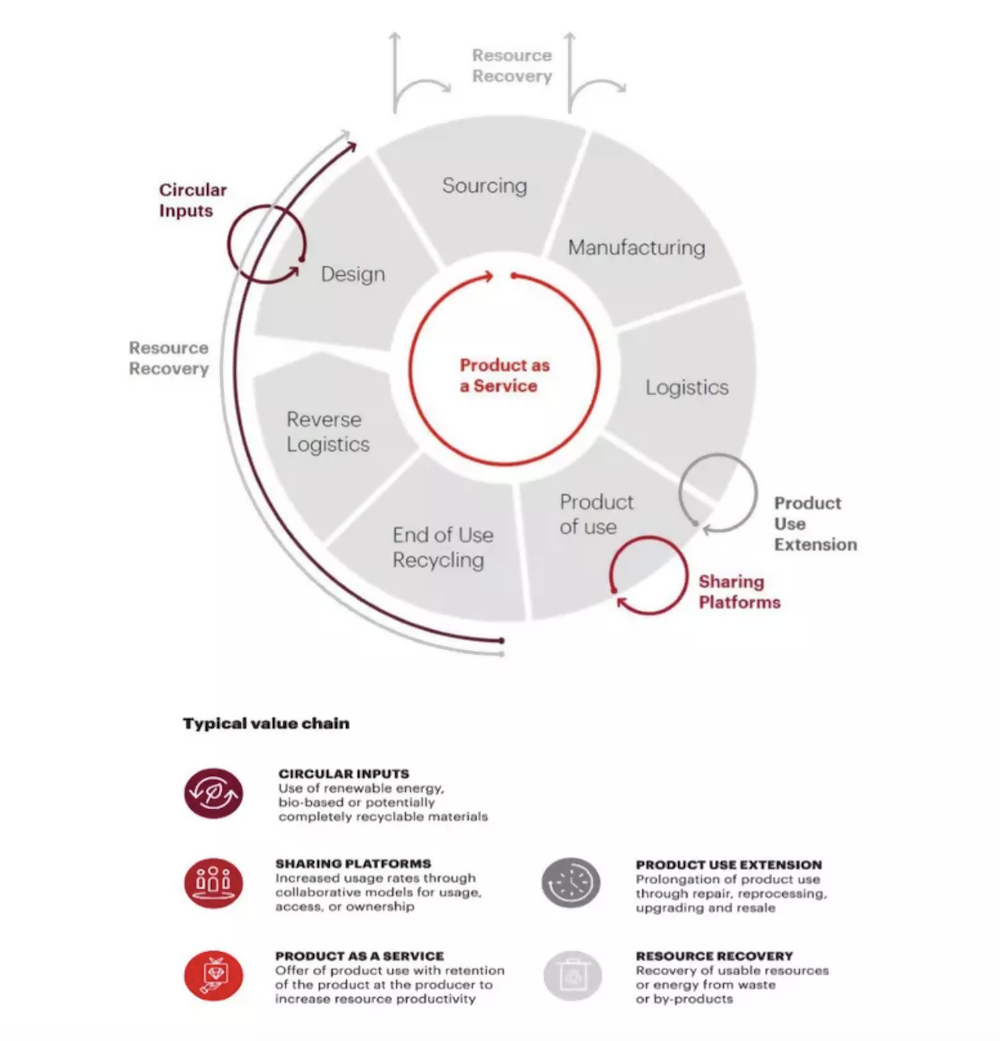This article was originally published by the World Economic Forum.
Over the past decade, the circular economy has come a long way. Numerous leading organizations around the globe have proven the business case for circularity by successfully adopting circular business models and leveraging disruptive technologies. However, these efforts have generally focused on small-scale initiatives or programmes that can be retrofitted into business-as-usual environments, limiting their transformative impact and scalability. To reach the full value potential of the circular economy, much more must be done.
In our work with dozens of clients and partners to deploy circular strategies around the globe, and through our analysis of more than 1,500 circular case studies via The Circulars, the world’s premier circular economy award programme, we have learned a lot. This extensive exposure to the circular movement has revealed a valuable lesson; obtaining competitive advantage from circularity requires more than just incremental change. It requires a fundamental reengineering of business.
Circular models have the power to transform the world as we know it—and change the bottom line for businesses. It’s not a simple or straightforward undertaking, but it couldn’t be more important. Not only are we talking about the creation of an economic system that puts people and nature first, we are also referring to enormous economic value at risk of not being captured. In a report entitled Waste to Wealth, Accenture estimated the value at stake at $4.5 trillion by 2030. This is between 4-5% of the projected global gross domestic product (GDP), more than the entire German economy today (the world’s fourth largest).
The five circular business models:
If industries embrace the wise pivot for circularity, it can yield astounding results. For example, analysis by Accenture has found that the fast-moving consumer goods industry can capture up to $110 billion by 2030 by optimizing its packaging for circularity. Investing in cheaper and newer ways to produce, manage and transmit renewable sources of electricity, meanwhile, could help the electricity industry capture up to $250 billion by 2030.
Individual companies can also achieve substantial results by embracing the pivot. Our experience has proven that utilizing circular business models as a framework for success is a good place to start. For instance, one avenue by which Dutch multinational Philips has generated significant value for their business is through embracing the Product as a Service model. One example is Lumify, a subscription service which provides customers access to ultrasound transducers, apps and an online ecosystem. The revenue generated from such green and circular initiatives constituted 64% and 12% of the company’s sales respectively in 2016, demonstrating the value of moving towards circularity.
Moreover, when you couple the business models with disruptive Fourth Industrial Revolution technologies – across the digital, physical and biological realms – the impact is accelerated, especially when these technologies are used in combination.
Digital + Digital: Winnow, a technology company in the hospitality sector, is helping its customers tackle the massive issue of food waste by deploying a combination of Fourth Industrial Revolution technologies. Utilizing artificial intelligence tools and accurate analytics, Winnow claims it can help chefs cut food waste in half, reduce food costs by 3%-8%, and achieve an increase in return on investment (ROI) of up to 10 times in year one
Digital + Biological: Indoor farming leader AeroFarms’ use of aeroponics and predictive analytics reduces resource consumption and waste generation, while increasing quality output. Co-founder and CEO David Rosenberg cites his firm’s combined focus on circularity and innovative technology as one of the key attractions for top talent – as a company of less than 100 employees, they receive over 2,000 job applications every month.
Digital + Physical + Biological: In tire company Goodyear’s new concept tire, Oxygene, moss grows within the sidewall of the tire by absorbing moisture from the road; the moss improves traction while helping to remove carbon dioxide from the air. For a city about the size of Paris, with 2.5 million vehicles, these tires could potentially extract 40,000 tons of carbon dioxide every year. Moreover, the energy harvested from the moss’ photosynthesis could then power electronic sensors in the tire that, through internet of things (IoT) technology, would be able to exchange data with other vehicles as well as with the transportation infrastructure, thus enabling applications for smart mobility. The disruptive 4IR technologies enabling the circular economy The disruptive 4IR technologies enabling the circular economy

THE JOURNEY TO MATURITY: A HOLISTIC TRANSFORMATION
A circular pivot does not happen by looking at segments of the organization in isolation. To capitalize on the transformational power of the circular business models and enabling disruptive technologies, and to accomplish a holistic pivot, organizations must advance their circular maturity across four dimensions.
No matter where you are in your circular journey, the time to act and to support the acceleration of the circular transition is now. The Circular Economy Handbook, which features an abundance of strategies, practical insights and case studies, can support your business in delivering the disruptive changes needed to secure a sustainable future for all, and will be launched at this year’s World Economic Forum Annual Meeting in Davos.

—
Guest Author: www.subscribed.com
This article first appeared in www.subscribed.com Seeking to build and grow your brand using the force of consumer insight, strategic foresight, creative disruption and technology prowess? Talk to us at +971 50 6254340 or engage@groupisd.com or visit www.groupisd.com/story


